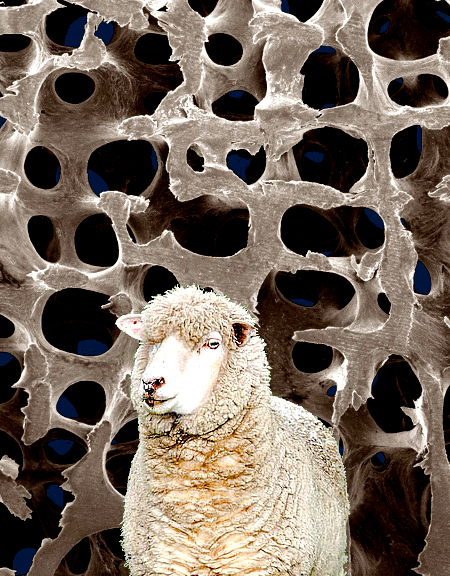New bone graft ingredients tested
 Australian bio-engineers have successfully made synthetic materials which encourage bone formation.
Australian bio-engineers have successfully made synthetic materials which encourage bone formation.
It brings the possibility of new synthetic bone grafts for fracture repair and reconstructive surgery a little bit closer. Currently, the patient’s own bone or donated bone is used, but a better synthetic option is needed as natural sources are too limited.
Murdoch University nanotechnology researchersworked with powdered forms of the bio ceramic hydroxyapatite (HAP) to form pellets with a sponge-like structure which were then successfully implanted behind the shoulders of four sheep by collaborators from the School of Veterinary and Life Sciences.
HAP is already being used in a number of bone augmentation and dentistry practices, but the complexities involved with compatibility and load bearing limitations mean it has been unsuitable for large applications.
HAP pellets of varying density and porosity were implanted into muscles of each of the sheep. The demonstrated good bio-compatibility, including mixed cell colonisation after four weeks and even new bone formation 12 weeks after the surgery.
“We already knew that synthetic HAP was a good material to study for possible use in bone-related medicine, but we needed to find out if the pellets we’d engineered were bio-compatible,” Murdoch nanotechnologist Dr Eddy Poinern says.
“Our results were very positive – our pellets acted as a scaffold for the growth of bone material, made possible because of its porous properties allowing cells to infiltrate.”
“The pellets were also very cost effective to make,” he said.
“This material begins as a powder that can be theoretically moulded to any shape, or perhaps one day even 3D printed, then sintered to harden it,” said Associate Professor Martin Cake, who surgically implanted the pellets into the sheep, and described the results as “stunning”.
r Poinern said he was hoping to improve and match the physical and mechanical properties of the pellets with those of natural bone tissue in a new study.
“Once these properties have been achieved, further implantation studies will be carried out to establish the feasibility of using this scaffold for bone grafts,” he said.
A paper on the research has been published in Nature’s Scientific Reports journal.








 Print
Print